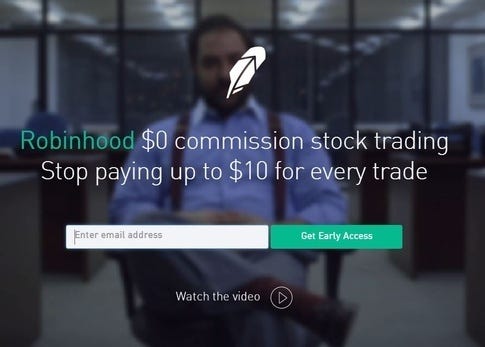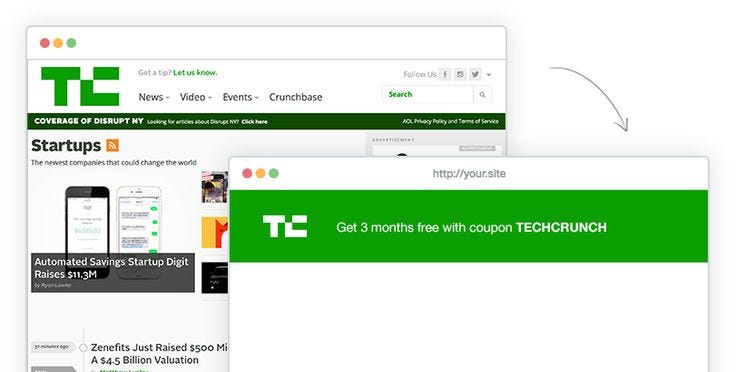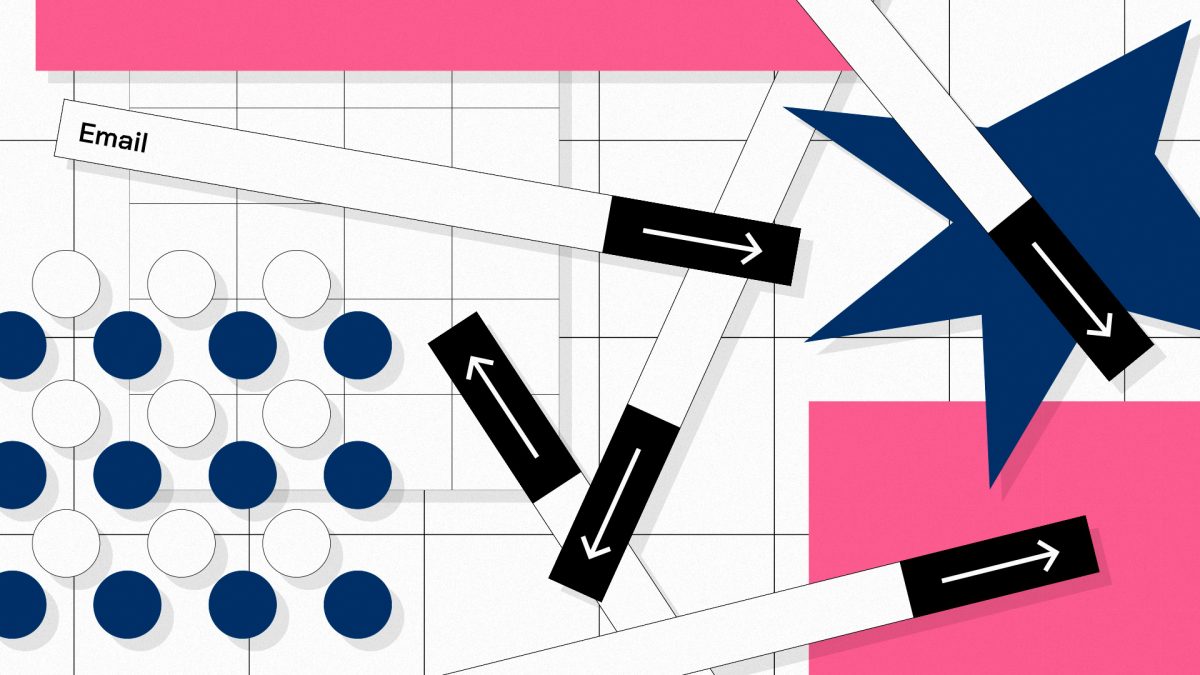Why Your Company Needs A Prelaunch Campaign.
As we wrote, It’s easy to get caught up in modern digital marketing tactics, but good old-fashioned marketing is unbeatable.
Take Forever21 (or any other mainstream brand name), for example. Last week they launched their new collection in collaboration with Kylie and Kendal Jenner.

They created a huge prelaunch hype.
By the day that the store began selling this clothing line, the girls who were supposed to buy it, already raved about it.
Pre-launch campaigns play a significant role in how people will perceive your product even before they get it in their hands.
Forever21’s success is indeed due to the celebrities involved, and like most of us, you may not have that kind of resources.
Why are pre launch campaigns important?
- Present your dream to the world.
- Test the market interest by gathering early adopters.
- Gather feedback about the product.
So what do you do? And why the heck do we write about pre-launch campaigns by using Ambassador Referral Campaigns?
We have the answer to both questions. Let’s get straight to it.
What do you have in stash for early adopters?
This is a crucial question to ask.
The is no straight answer to that, but there are some options:
- Discounts.
- Extended product features.
- Early access.
I think that providing discounts is pretty straight-forward, so I’ll move right to proving extended product features.
Think of something in the same lines with Dropbox providing extra space on the cloud for the more people you referred to.
So, if you for example run subscription-model business with different pricing plans, you can either give early adopters the chance to use it for free or get the perks of a higher plan even if they purchase a smaller one.
Now, have you ever heard of FOMO?
FOMO a.k.a. Fear Of Missing Out is a powerful force.
So powerful, in fact, that merely making potential customers feel like they might be missing out on something can often move them to action.
56% of surveyed adults admit that FOMO impacts their media usage habits, for example, compelling them to look at social media again and again.
Marketers can harness FOMO by creating an impression of exclusivity through the use of wait lists, limited supply, and time limits.
FOMO is the principle that makes giving early access to users so important on pre-launch campaigns.
And Robinhood took advantage of that principle. As a part of their pre-launch strategy, the Robinhood team invited potential app lovers to gain invitation-only, early access to its private beta.
Instead of inviting potential Robinhood users to join a mailing list, the company appealed to its interested fans’ desire to be the first to benefit from what Robinhood had to offer.
And this offer was so enticing, that it got the attention of Hacker News, which was “Every engineer’s dream in the Valley,” according to co-founder Vlad Tenev.
How can you do it for your business?
Well, the first step you must take is to set up your ambassador referral marketing program, and our Milestone Referral Template is the best choice for running a pre-launch campaign for your new product.
Here’s how it works.
Your participants join the Milestone Referral campaign and reach milestones as they refer more and more friends to join the campaign.

For example, the first milestone can be at five referrals, then at 15, 30, and so on.
To do a pre-launch campaign with this concept, you may have the milestones to be specific dates that campaign participants are going to get access to your product, starting with the date that is furthest away.
The more friends a participant brings to your campaign, the earlier they will get access.
Take a look at the following God-awful example graphic (sorry, I promise to improve my design skills):

The participants that refer just five friends will get access in late June, but those that bring at least 25 referrals will get access first on May 1st.
The gamification aspect of the Milestone Referral template makes it very appealing to your campaign participants, and you can get high engagement on such a campaign.
7 things to do while in Prelaunch.
This is it!
It’s finally happening! After all these months (or has it been years?) of blood sweat and tears, you are at last ready to push the button.
You’re going 8 mile now – this is your shot to greatness.
You close your eyes and prepare for the upcoming fireworks and marching bands…
Rolling tumbleweeds and the sound of crickets is what you get instead.
But you worked your ass off! How is this possible?
You wake up in your bed. It was only a dream…
Let’s do it the right way this time.
1. Find your Message.
In one of the most popular TED talks ever made, Simon Sinek explains the difference in mindset between a company that focuses on what they do and how versus one that knows first of all why they do it.
Do you have a clear idea of why you do what you do? Do you communicate it to the world effectively?
Chances are you’re not the only one doing what you are doing. So ask yourself – as a customer, when faced with the option to choose between similar products, what affects your decision?
Price, sure. Features and aesthetics too. But what influences you the most is your instinct. You will buy from the company that you trust more, that you feel a stronger connection to.
Facts do not move people, but emotions.
The message you put out should appeal to your customers’ hearts, not their logic. Make sure you position yourself in a way that connects with your customers and sets you apart from competitors.
2. Listen to your market.
You’ve thought of everything. Your product is just perfect. You can already imagine the people trampling over one another to get their hands on it first. They will love it.
Hold your… horses for a second.
Don’t just assume you know what’s best for your customers, or that you know how to solve their problems better than they do. It could be that no one needs something you’ve built in, or there’s a particular essential (and perhaps pretty simple) feature missing.
So ask them!
What do they love about your product? What is “ok” but could be improved? What needs changing? What is a deal breaker? Act on the feedback you get.
Question. Explore. Improve.
Listening to the pain points of your community and acting on the feedback is the most important thing you can do at this stage. Don’t go launching what you think your customers want instead of what they want.
3. Start the hype train.
To have a killer product launch, putting the words out there at the last minute won’t cut it. You have to start creating hype long before the actual day.
The list below is by no means exhaustive. If you get some excellent idea about creating hype around your product, definitely go for it!
So, here are a few ways:
- Make it Personal.
No one cares about the actual features of the product, what they care about what it does for them. When Apple introduced the first iPod to the world, they didn’t say “it has a 5GB hard drive”.They said “1000 songs in your pocket”. What’s more powerful?When introducing your product, showcase the problem your ideal customer faces. Then paint a vivid picture of how this problem affects their business or themselves. Finally, demonstrate how it saves them money/time/frustration. - Early Birds.
Offer early adopters something for pre-ordering your product, whether that is reduced prices, VIP service, or some non-monetary reward.By doing that, not only do you create the urgency for a limited time offer (and revenue in the door before you even put your product out there), but also possible referrals since your early birds wouldn’t want their friends to miss out on the opportunity. - Crowdfunding.
Similar to pre-orders, using crowdfunding will give you a stream of revenue before the actual launch and help you build a community. People take pride in being part of creating something, so they are bound to tell their friends about their contribution. - Behind the Scenes and Teasers.
Letting people witness the process leading up to the launch will make them feel part of the family. Share some interesting behind-the-scenes pictures and videos during the development phase.
For physical products, show and explain how the product is created. For digital products, post relevant memes, videos, or photos of your team at crucial moments during the development process.
Another great way to create hype is to post teaser content.
If you can make the audience intrigued but withhold some information so that they are left guessing, you will generate some serious buzz around your product.
Later on, you can allow for some “leaks” (again not giving away the full picture) to spark interest even more.
- Freebies.
Let’s face it. People love free stuff.Hosting a contest or giveaway will get you attention for a dirt low price. Making sure the call to action is something fun or unusual (remember planking?), might make more people engaged in the process, or even make it go viral.Include multiple calls to action that will give the contestant a better chance of winning.For example, posting with a specific hashtag might give him one entry for the competition, sharing the post and tagging a friend will get him an additional entry each.Most importantly, the star of the show -the prize- should be something cool. It doesn’t need to be monetary (that’s not a colossal motive anyway – unless in considerable amounts), but it has to be something people would love, or love to brag about.Check out our Ultimate Guide for a Successful Giveaway for more in-depth advice on how to create a killer giveaway. - Have a Landing Page. Seriously.
Having a landing page lets people offer you their email for updates and insider news on the product. That way, you can nurture them until the launch through email marketing.Make sure to have a “Thank You” page after they sign up, where you include a CTA for sharing the landing page on their social media profiles. Sharing is caring. - Influencers.
Reaching out to the proper influencers will put your product in front of a significant number of highly qualified leads. Depending on the amount of influence they have over their followers, you can generate considerable interest and even loyalty to your product. - Create an Explainer Video.
In 2008, an explainer video helped Dropbox get 70.000 new subscribers in 24 hours.Statistics show that video continues being on the rise.Creating a video that explains most engagingly and straightforwardly what your product does and how it solves a problem might give you a considerable boost in traction. - Blogging/Guest blogging.
Don’t forget the basics. Have a steady flow of blog posts about your product, with keywords that are relevant to what people search for.Also reaching out to other bloggers and offering your product in exchange for a review, or to ask for guest posts is a good idea to utilize established fanbases in your niche. That way, you can draw attention to your website and product, but also provide backlinks to your blog from an SEO perspective. - Be Visual.
Infographics are visually engaging and easily consumed, and in effect, very shareable. Start a conversation by posting an infographic and asking people what they think. - Go Old School.
Don’t forget “vanilla” marketing. Show up at events and do some networking. You can offer a demo of your product to some influential people to get some extra press.
Then let it spread like wildfire. ..
4. Get your team ready.
As you prepare for a spike in traffic and sales, it is good practice to have everyone on board and ready for dealing with the issues that will arise on launch day.
- Learn the Product.
The team must be expert users of the product. Everyone should know how everything works, and be able to explain it in the most dumbed-down way possible. - Make a List of FAQs.
You can quickly figure out what questions customers will (usually) have about the product. Make a list of frequently asked questions and answers on your website to help people solve their queries fast and relieve your customer service some of the workload. - Practice Product Demo and Pitch.
The team must be able to demonstrate how the product works within a set amount of time, and know how to showcase its benefits without being too “salesy”. - Prepare the Sales Process.
Establish a process for the customer’s journey to streamline sales once a prospect expresses interest.
5. Set up goals and metrics.
“If you can’t measure it, you can’t improve it.”
The importance of this paraphrased quote from the daddy of modern management theory Peter Drucker should be painfully obvious when setting up the stage for your launch.
Simply put – What do you expect to achieve?
Goals give your team something tangible to work towards, a sense of direction. When setting your goals, make sure they are S.M.A.R.T. – if you’re not familiar with the acronym, it doesn’t mean goals of superior intellect, but goals that are:
- Specific – describe the target with deadly precision, include zero ambiguity in the language.
- Measurable – how much, how many, how will I know when my goal is accomplished?
- Attainable – the goal is neither out of reach nor too easy/not challenging enough.
- Relevant – the goal is consistent with the bigger picture and long term plans.
- Time-based – setting a deadline establishes urgency and helps with time management.
Having goals that are well defined and challenging but possible to achieve within a specified timeframe, helps you and your team create a game plan that will serve as a tool to coordinate your actions and put you on track.
Some examples:
- Sales – We will have 50 active subscriptions by the end of the month following the launch.
- Awareness – Within a week after the launch, we will see five review posts about our product, 100 signups, or 3000 visits on our site.
- Leads – By the end of the sixth week after the launch, we will have identified 300 leads.
- Demos – We will have demonstrated the product to 100 potential customers within two months after the launch.
- Upgrades – 100 users of our product will have upgraded from the trial version within 90 days following the day of the launch.
Once the goals are in place, it is time to define and capture the metrics that support the goals and give you an insight into how effectively they were attained.
6. Leverage the launch day.
Alright.
You’re in the trenches now. You are going in for the kill.
Today is first all about exposure and capturing attention, and then – if successful – managing the spike of traffic and interest you will receive regarding your product.
- Go all out on social media – join relevant communities, post on every platform notifying your followers about the launch. You can also send a quick email to your subscribers, letting them know how important this day is and asking for their support.
- Avoid significant events that will steal your spotlight. New Apple product launching on the same day? Change dates without a second thought. If however, you can coordinate your launch with an event, you might benefit from the increased exposure.
- Have a compelling landing page ready. Simple. Clean. Powerful message. Consider giveaways (who doesn’t love free stuff?). What a great first impression of your brand.
- Update your social media whenever you hit certain milestones. Post pictures or gifs to capture more attention and thank your community for their support.
- Have the whole team engaged and keep up with everything. Reply to comments, answer questions, handle requests. This is the big day; everyone on the team should give their 110%.
7. Choose your post-launch actions carefully.
So you’ve done it!
The launch was a roaring success. Traffic is up; sales are booming. Is it time to lay under the sun on a tropical beach or sail across the Mediterranean on a yacht now?
Not quite.
You just brought your product to life. Now begins the process of fine-tuning and refining every aspect of it. Pricing, messaging, user experience. Everything can be – and should be – improved during the product’s life cycle. Give your customers a reason to keep coming back and talking about it.
Intercom’s post-launch loop involves 3 actions:
- Collect feedback – listen for every problem your customers face through social media and calls, gather analytics data.
- Watch for patterns – categorize all data into relevant themes such as churn, bounce, conversion, and CTRs.
- Improve – act based on the insights you gained through the previous step.
Keeping sales up is an ongoing process which you can maintain through various approaches:
- Stay on top of the game with content marketing (blog posts, email nurturing)
- Start an affiliates program
- Promote discounts
- Showcase social proof (prospects are more likely to trust other people’s reviews)
- Optimize your website
- Stay active in social media and communities
- Track and interpret analytics
- Reach out to influencers and raving fans
Launching your product is a big deal, and should be treated as such. Having a solid plan and executing it as flawlessly as possible certainly gives you the best chance for success.
7 things to do while in Prelaunch:
- Find your Message.
- Listen to your market.
- Start the hype train.
- Get your team ready.
- Set up goals and metrics.
- Leverage the launch day.
- Choose your post-launch actions carefully.
10 Tips To Boost Your Startup’s Pre-Launch Campaign.
1. Build a pre-launch landing page.
A landing page is the image of your product to the world. It can help you deliver the right message to the right audience.
In general, you should be thinking about growth before you even launch your product. That’s why you should have a place where you can get users to sign up for exclusives, e.g. early access, special offer, gifts, etc.
Some quick wins for your pre-launch landing page are:
- Have a clear Value Proposition of your product.
- Have CTA(CallsToAction) in several places on your page. (don’t overdo it) Ideally, in the top section and at the bottom of your page.
- Include fun and descriptive video or an image to keep your page sexy.
Below is Robinhood’s landing page, when they were doing their pre-launch campaign. They gathered over a million pre-launch users.

Robinhood had one of the most successful prelaunch campaigns.
If you want a Robinhood-style pre-launch campaign, join Viral Loops today!
2. Use a viral boost to get more leads.
In that pre-launch stage, all you need is to get emails, as many emails as you can. Get people to love you.
Turn early-visitors into advocates of your product. When someone visits your website, she can join a wait list or a giveaway where she can get early access if she refers to her friends.

In Viral Loops, we offer a Robinhood-style pre-launch template to run a proven prelaunch campaign. You’re ready to go in seconds.
3. Boost traffic with ads.
This is probably the most scalable and easiest way to test different campaigns and get immediate results.
It’s necessary to run campaigns on paid channels because they’re highly customizable, and you can easily target and test specific groups.

Facebook is an excellent solution if you want something cheap, with great targeting options and quick results.
You can use AdEspresso to easily create your Facebook ads and save a ton of time in creating variations traditionally.
4. Have a banner with every important referral page.
Customize your landing page by adding welcoming banners to users from a range of referral sources.
Some great tools to use are Introbar and Appocalypsis.

5. Submit your startup. (PH, HN, Betalist)
There are several websites where you can expose your startup and build backlinks. Have you tried Product Hunt? Betalist? Hacker News?
You can take a look at this list, which has all the necessary communities to list your startup.
If you don’t have time to submit your startup, you can have a look at this marketing tool, which helps you submit your information to startup directories, review sites, and communities
6. Build/engage with a community.
One of the cheapest ways to create momentum for your product is to build a community around your startup.
A community is much more than a one-time marketing campaign and can help you throughout your company’s life cycle if you take the time to grow it right.
You can create a Slack community; you can have a look at Buffer’s approach on how to create one.
Here’s a great guide for building awesome communities, created by Sacha Greif.
7. Building Marketing Into Your Product.
“Marketing is for companies with sucky products”- Fred Wilson, VC
Dropbox, Hotmail, Eventbrite, Mailbox, and Snapchat acquired tons of millions of users with almost no money spent on marketing. They just built virality into their product.
A startup’s ability to go viral depends on two variables: time, and the ‘viral coefficient,’ i.e., the number of new users each user generates.
The graph below illustrates startup growth at different rates based on different viral coefficients. Let’s say that the Y-axis represents your number of user signups, and the X-axis represents time.

If your viral coefficient is 1.0 (each user generates one new user), you will achieve linear growth, assuming you retain your users. If you have a viral coefficient above 1.1, you will achieve exponential growth as illustrated by all of the lines above the lower green line.
With Viral Loops and our battle-tested referral templates, you can build virality into your product like Dropbox and Airbnb.
8/9/10. Team Team Team
The team is probably the most critical aspect of a successful company. No matter what idea you want to fund, big or small, working with a team allows you to multiply your network, divide and conquer tasks, focus on your areas of expertise and make your campaign the strongest it can be.
10 Tips To Boost Your Startup’s Pre-Launch Campaign:
- Build a pre-launch landing page.
- Use a viral boost to get more leads.
- Boost traffic with ads.
- Have a banner with every important referral page.
- Submit your startup. (PH, HN, Betalist)
- Build/engage with a community.
- Building Marketing Into Your Product.
- 9. 10. Team Team Team!!!
Apostle Mengoulis
Apostle is a core member of the founding team at Viral Loops. He has worked closely with hundreds of referral marketing campaigns made with Viral Loops. Apostle has years of experience in growing and marketing companies and co-founded Growth Hacking University.


1 comment
Thank you Apostle,
Your have provided this blog post with such valuable insights and well established strategies for pre launching the product.
I literally haven’t seen such a matured and nicely written blog anywhere on the internet.
Thanks again.